Mystery Of The Maya Blue Pigment And Its Unusual Chemical Composition
Ellen Lloyd - AncientPages.com - The Maya Blue has been a scientific puzzle mainly due to its unusual chemical composition. Maya blue is a highly resistant artificial pigment. Despite the time and the harsh weathering conditions, paintings colored in Maya blue have not faded over time. However, the blue dye could be destroyed with intense acid under reflux.
The Maya Blue (azul maya in Spanish) has been discovered at several architectural locations from the ancient Mayan civilization, including the archaeological site of Cacaxtla on the Mural de la batalla.
This pigment was named Maya blue because it was thought to exist only in the Maya area of Yucatan. Today, it is known that there are murals with Maya Blue in various parts of Mesoamerica, as in the Tajin, Tamuín, Cacaxtla, and Tenochtitlan (Templo Mayor), Zaachila, Tula, and other parts of Central America. The pigment has also been found on palace walls, ceramics, codices, sculptures, and even the bodies of human sacrifices.
Maya blue first appeared around 800 and was still used in the 16th century.
The recipe and process for preparing Maya Blue, a highly-resistant pigment used for centuries in Mesoamerica, were lost. Bonampak is an ancient Maya archaeological site in the Mexican state of Chiapas featuring Maya Blue pigment. Credit: Darij & Ana, Wikipedia, Creative Commons
Scientists have long known the two chief ingredients of the intense blue pigment: indigo, a plant dye used today to color denim, and palygorskite, a type of clay. However, how the ancient Maya produced unfading paint remained a mystery.
The history of the Maya blue began in 1931 when scientists analyzed a bluish substance found in the exploration of the Temple of the Warriors in Chichén Itzá (Yucatan). Since then, scientists from different countries have dedicated their efforts to unlocking this compound's secrets.
Some years ago, scientists from the University of Valencia in Spain discovered traces of another pigment in Maya Blue. "We detected a second pigment in the samples, dehydroindigo, which must have formed through oxidation of the indigo when it underwent exposure to the heat required to prepare Maya Blue," Antonio Doménech, a researcher from the University of Valencia, said. It could solve the Maya Blue mystery.
"Indigo is blue, and dehydroindigo is yellow. Therefore the presence of both pigments in variable proportions would justify the more or less greenish tone of Maya Blue," Doménech explained. "It is possible that the Maya knew how to obtain the desired hue by varying the preparation temperature, for example, heating the mixture for more or less time or adding more or less wood to the fire."
In 2008, American scientists claimed that copal resin, which was used for incense, may have been the third secret ingredient for Maya Blue. Their research was based on a study of a bowl that had traces of the pigment and was used to burn incense. However, Doménech remains skeptical and remarked that the bowl contained Maya Blue mixed with copal incense, so the simplified conclusion was that it was only prepared by warming incense.
Credit: Constantino Reyes - Public Domain
The Egyptian blue is the world’s oldest artificial pigment. It appeared about 5,000 years ago in a tomb painting dated to the reign of Ka-sen, the last king of Egypt’s First Dynasty. Blue dye was also used in ancient Egypt. The chemical composition remains unknown, at least for now.
Scientists have discovered that the Egyptian blue pigment has extraordinary properties and will enable us to reconstruct the past and possibly shape the technological future.
The material giving Egyptian blue its color is calcium copper silicate. It was made by grinding sand, lime, and copper (or copper ore) and heating the mixture in a furnace.
Could the answer to the secret ingredient for Maya Blue be hidden in the composition of the ancient Egyptian blue pigment?
Ancient Egyptians used blue pigment in paintings, such as wall paintings, tombs, mummies’ coffins, and ceramics.
Updated on June 26, 2022
Written by Ellen Lloyd - AncientPages.com
Expand for referencesReferences:
More From Ancient Pages
-
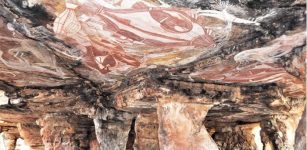 What Is The Hidden Meaning Of The 15,000-Year-Old Rock Art In Arnhem Land?
Featured Stories | Jan 12, 2024
What Is The Hidden Meaning Of The 15,000-Year-Old Rock Art In Arnhem Land?
Featured Stories | Jan 12, 2024 -
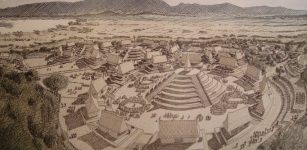 Circular Stepped Pyramids Of Guachimontones And Teuchitlan Tradition – A Lost Ancient World In Mexico
Civilizations | Mar 13, 2016
Circular Stepped Pyramids Of Guachimontones And Teuchitlan Tradition – A Lost Ancient World In Mexico
Civilizations | Mar 13, 2016 -
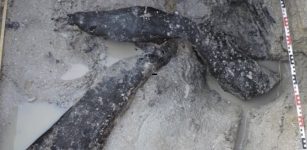 Discovery Of Half-Million-Year-Old Wooden Structure Shows We’re Wrong To Underestimate Our Ancient Relatives
Featured Stories | Oct 10, 2023
Discovery Of Half-Million-Year-Old Wooden Structure Shows We’re Wrong To Underestimate Our Ancient Relatives
Featured Stories | Oct 10, 2023 -
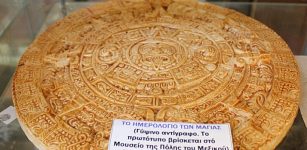 On This Day In History: Mesoamerican Long Count Calendar Begins – On August 11, 3114 B.C
News | Aug 11, 2016
On This Day In History: Mesoamerican Long Count Calendar Begins – On August 11, 3114 B.C
News | Aug 11, 2016 -
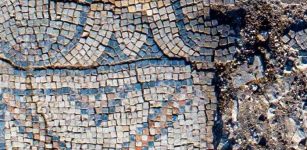 Beautiful Mosaics In 1,300-Year-Old Church Discovered In The Lower Galilee
Archaeology | Aug 29, 2020
Beautiful Mosaics In 1,300-Year-Old Church Discovered In The Lower Galilee
Archaeology | Aug 29, 2020 -
 Unexplained Phenomenon Around Yellowstone Puzzles Scientists
Featured Stories | Nov 12, 2018
Unexplained Phenomenon Around Yellowstone Puzzles Scientists
Featured Stories | Nov 12, 2018 -
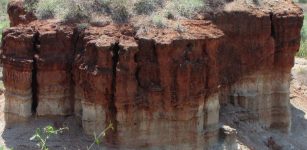 Spectacular Olduvai Gorge And Early Hominid Fossils Found In East Africa
Archaeology | Nov 26, 2016
Spectacular Olduvai Gorge And Early Hominid Fossils Found In East Africa
Archaeology | Nov 26, 2016 -
 Sightings Of Mysterious Walking Children And Ominous Beings In California’s Cursed Forest
Featured Stories | Oct 15, 2024
Sightings Of Mysterious Walking Children And Ominous Beings In California’s Cursed Forest
Featured Stories | Oct 15, 2024 -
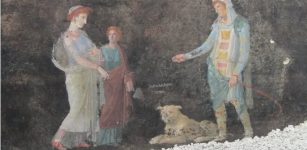 Amazing New Frescoes With Mythological Individuals Discovered At Pompeii
Archaeology | Apr 11, 2024
Amazing New Frescoes With Mythological Individuals Discovered At Pompeii
Archaeology | Apr 11, 2024 -
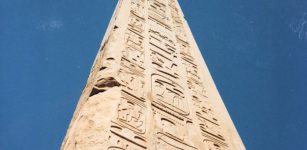 How On Earth Did The Ancient Egyptians Raise Their Colossal Obelisks?
Featured Stories | Feb 14, 2022
How On Earth Did The Ancient Egyptians Raise Their Colossal Obelisks?
Featured Stories | Feb 14, 2022 -
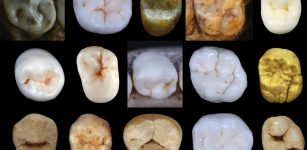 Neanderthals And Modern Humans Diverged At Least 800,000 Years Ago
Archaeology | May 17, 2019
Neanderthals And Modern Humans Diverged At Least 800,000 Years Ago
Archaeology | May 17, 2019 -
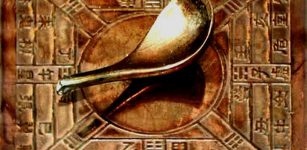 Magnetic Compass Was Invented In Ancient China
Ancient History Facts | Mar 18, 2016
Magnetic Compass Was Invented In Ancient China
Ancient History Facts | Mar 18, 2016 -
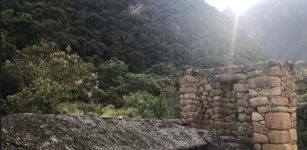 Unique Chachabamba Complex Hidden In Peruvian Forest Reveals Its Secrets
Archaeology | Feb 7, 2019
Unique Chachabamba Complex Hidden In Peruvian Forest Reveals Its Secrets
Archaeology | Feb 7, 2019 -
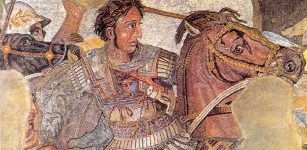 How Did Alexander The Great Die?
Featured Stories | Apr 9, 2016
How Did Alexander The Great Die?
Featured Stories | Apr 9, 2016 -
 Ancient Brewing And Natufian Rituals – What Came First, Beer Or Bread?
Archaeology | Sep 14, 2018
Ancient Brewing And Natufian Rituals – What Came First, Beer Or Bread?
Archaeology | Sep 14, 2018 -
 Ancient Artifacts With Puzzling Signs Found In North America May Be Evidence Of A Lost Civilization Or Unknown Native American Tribe
Featured Stories | Feb 4, 2025
Ancient Artifacts With Puzzling Signs Found In North America May Be Evidence Of A Lost Civilization Or Unknown Native American Tribe
Featured Stories | Feb 4, 2025 -
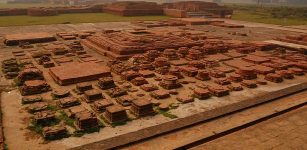 Vikramashila: India’s Main Intellectual And Learning Center Of Tantric Buddhism
News | Sep 19, 2015
Vikramashila: India’s Main Intellectual And Learning Center Of Tantric Buddhism
News | Sep 19, 2015 -
 3D-printed replica of an artefact revives music of Iron-Age Ireland
News | Sep 4, 2015
3D-printed replica of an artefact revives music of Iron-Age Ireland
News | Sep 4, 2015 -
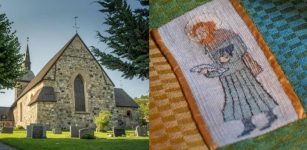 Saint Botvid – Viking Who Was Killed By A Slave He Granted Freedom
Featured Stories | Apr 10, 2023
Saint Botvid – Viking Who Was Killed By A Slave He Granted Freedom
Featured Stories | Apr 10, 2023 -
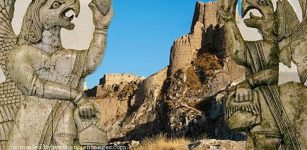 Ancient Settlement Inhabited By Urartian People – Unearthed
Archaeology | Oct 13, 2020
Ancient Settlement Inhabited By Urartian People – Unearthed
Archaeology | Oct 13, 2020


